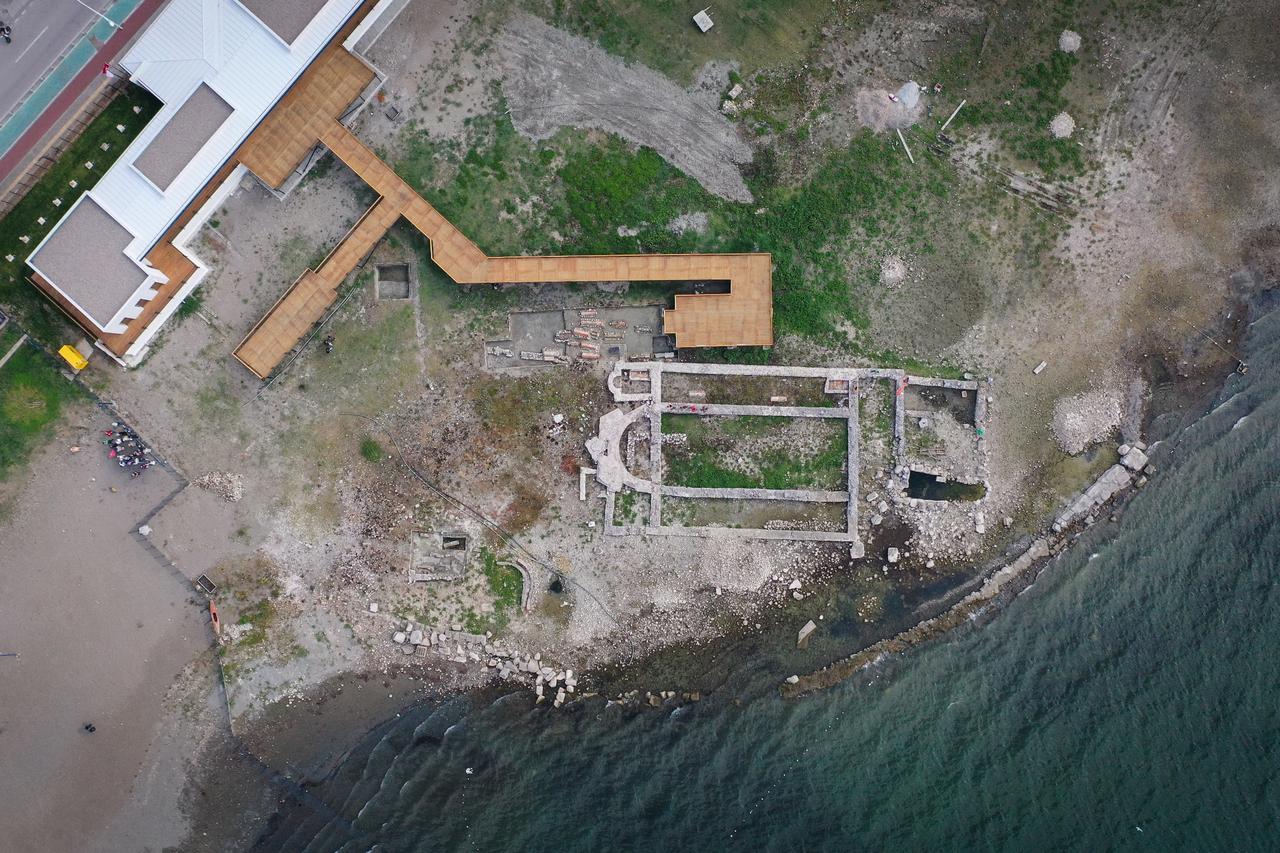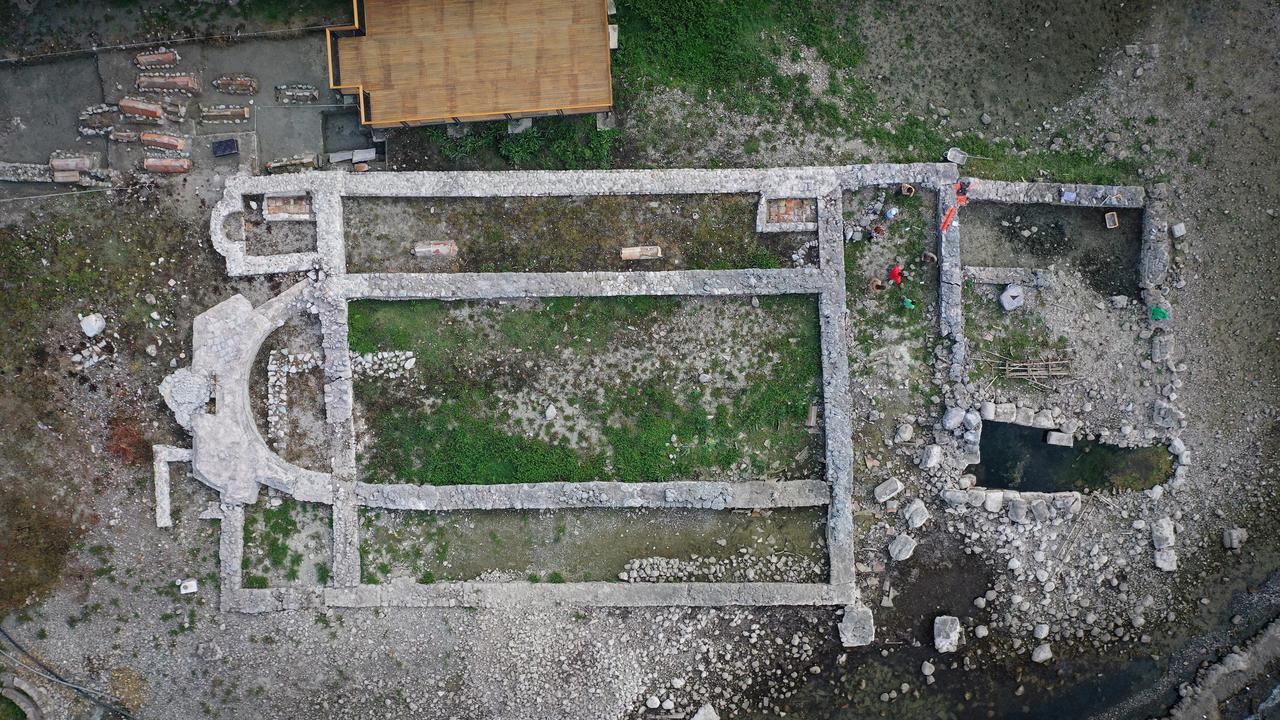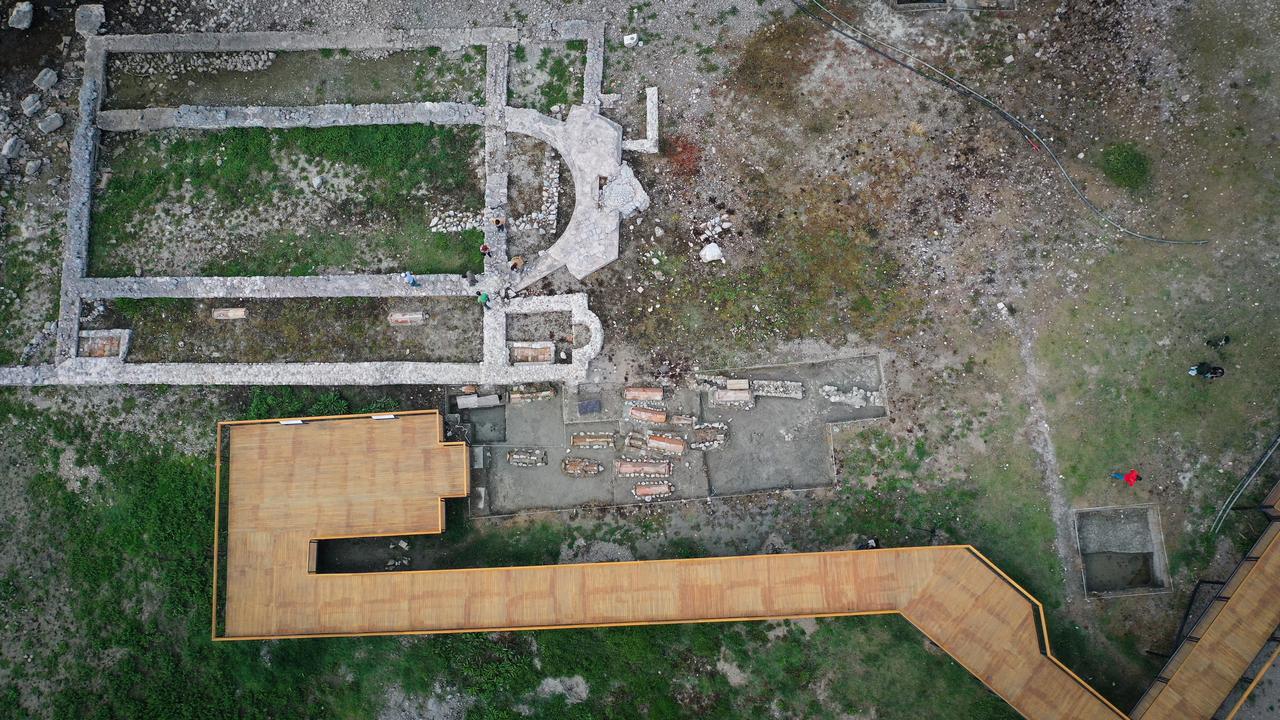
Excavations and underwater research at the historic basilica in Türkiye's Iznik, where the First Council of Nicaea was held in 325 with the participation of all Christian bishops, are continuing under the leadership of Professor Mustafa Sahin from Bursa Uludag University’s Department of Archaeology.
The project, launched in 2015 with the permission of the Ministry of Culture and Tourism and support from the Bursa Metropolitan Municipality, is being conducted in collaboration with the Ministry of Environment, Urbanization and Climate Change, the Ministry of Agriculture and Forestry, and international partners.
The basilica, discovered 11 years ago about 20 meters off the lakeshore at a depth of 1.5–2 meters, is expected to receive a visit from the Catholic spiritual leader and Vatican head, Pope Leo XIV, on November 28–30, marking the 1700th anniversary of the First Council. Preparations, including environmental arrangements and exhibition setup, are ongoing.

Sahin, speaking to state-run Anadolu Agency (AA) on Monday, said that the excavation team this season included 60 experts, including anthropologists, restorers, archaeologists, and art historians. The team plans to continue work until the end of November to finalize preparations ahead of the Pope’s visit.
The basilica measures 20 by 40 meters, covering roughly 800 square meters. Sahin highlighted that it is the largest known church in Iznik and suggested that the findings confirm it as the long-discussed Holy Fathers Basilica, a theory now recognized within the Christian community.
“Hosting the Pope in this area may turn this church into a pilgrimage site for Christians. If so, our country could gain a key destination for faith tourism,” Sahin said, noting the basilica’s historical significance.
He explained that the original structure, dedicated to Saint Neophytos, was destroyed in the 358 earthquake and rebuilt around 380 as the Holy Fathers Basilica.

Excavations focused on the southern nave, the eastern apse, and northeastern cemeteries, revealing 37 graves. Sahin noted unusual features, including multiple skeletons moved into single graves and signs of fractures or deformities, indicating that those buried had died for their faith.
Restoration work included carefully reconstructing damaged graves using Cappucino and Semerdam techniques, and returning the skeletons to their original positions after documentation and photography, allowing the site to be displayed authentically.
"The basilica, its burials, and artifacts provide a unique insight into early Christian practices and the First Council’s legacy," Sahin concluded.